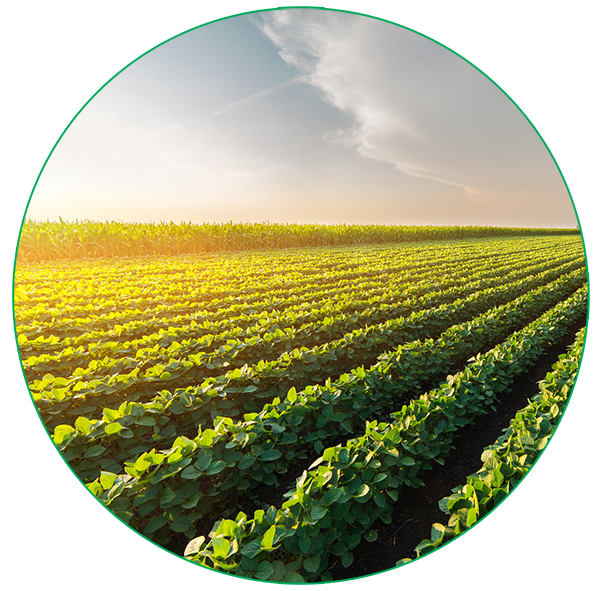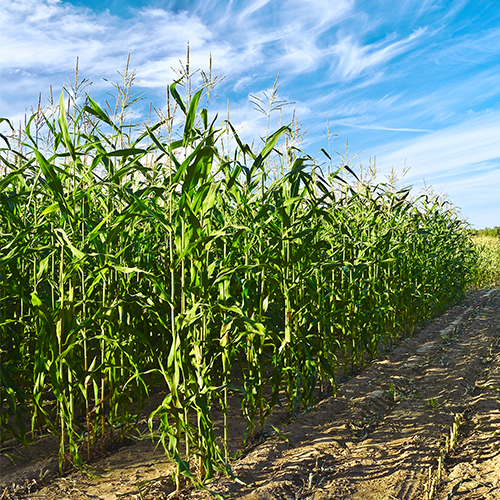Agriculture in India covers nearly 180 million hectares, and the organized sector lends more than $ 100 billion to farmers each year. For an industry so large, the need for timely, comprehensive, organized data and analytics remains strong. PInCER, at its heart, is a live crop map that presents the geo-location of standing crops across the country. Using satellite imagery to classify crops, PInCER makes the crop map actionable by overlaying useful data on it, including village boundaries, farm sizes, crop health, weather forecasts, yield estimates, and land ownership. It allows for data-based decision-making on the development of loan products, manpower deployment, collection strategy, and crop risk.
BANKS
How does PInCER help?
Cropalytics solution makes the process cost-effective & helps the banking sector monitor risk in near real-time. Our solution enables banks to streamline their lending strategies, develop loan products, deploy manpower, and manage crop risk based on data.
Agribusiness lenders and banks can mitigate risks by utilizing region-specific offerings such as weather-based advisory, acreage insights, and yield & harvest predictions. Cropalytics’ pest and disease module provides a 15-day warning about likely disease and pest infestations.

PInCER Modules Enable the Banking Industry
Village Prioritization
Helps lenders classify villages based on crop acreage, health, yield forecast, and scores of other parameters
Farmer Risk Profile Verification
Using the farmer’s geo-location remote images and land records to verify the farming history, ownership, and acreage
Farmer Decision Support System
Mobile app that supports farmer enrollment, geolocation, tracking, and advisory for crop risk mitigation
Field Management System
A portal for allocation of territories and farmers to extension teams, tracking actual visits, and supporting navigation to enrolled farms. A helpful tool to manage FPOs
In-season Tracking
Using remote sensing to track areas and crops of interest, monitoring crop health, making yield estimates and harvest updates
Portfolio Analysis
Assess crop risk progressively, using stochastic models at the pre-sowing stage and deterministic models using remote-sensing for standing crops. Estimate share of the portfolio at NPA risk and likely recovery from insurance
Key benefits of using PINCER
Satellite and weather-based advisory
Prioritize your target area
Demand forecasting & effective go-to-market strategies
Better manpower & resource allocation
Track crop-specific acreage and yield estimation
Target field visits for your last-mile delivery
Success Stories

Mapping maize crop acreage for an agrochemical and agricultural biotechnology corporation
The client wanted to conduct a study to estimate and map the crop acreage of Maize across 5 countries in Asia (China, India, Pakistan, Philippines, Thailand & Vietnam). The aim was to have a scalable approach to identify Maize-growing regions in these countries and estimate crop acreage, which will eventually help the company plan for its maize-oriented products.
We adopted an integrated approach to use satellite imagery, ground survey, and secondary information to develop an understanding of Maize crop acreage. We conducted a detailed analysis to understand the Maize crop’s sowing window, crop duration, and spatial distribution/spread across the five Asian countries during 2018-19’s multiple cropping seasons.

IDENTIFYING AREAS OF CROP-GROWN: REAL-TIME TRACKING AND MAPPING OF MUSTARD PRODUCTION
The client is a leading commodity board that sought an innovative approach to monitoring crop production nationwide. The aim was to know the likely production of the mustard crop in the country. In the past, they relied on limited survey-based estimations and publicly available data, resulting in a less reliable strategy by associated members of the board.
We adopted a solution that involved creating a comprehensive crop map of mustard across the country, allowing them to track the progress of the crop throughout the season. We also factored in the impact of untimely rains and other weather parameters, ensuring our estimates were as accurate as possible.

TRANSFORMING CROP TRACKING: A CASE STUDY ON CROP MAP FOR PLANNING PRICE FLUCTUATION
A leading commodity board sought an approach to monitor crop production nationwide and branch out into new districts. They required insights on which villages to prioritize for their operations as they were relying on survey-based estimations and publicly available data, which was dated and resulted in significant losses due to unpredictable price fluctuations.
We adopted a cutting-edge solution, providing a Pan-India soybean crop map that delivers precise acreage estimations and tracks the crop throughout the season. By mapping the crop, we could identify and illustrate the impact of unseasonal rainfall on likely production and supported the client in planning their procurement strategy.

IDENTIFYING NEW AREAS FOR LOAN ORIGINATION: EXPANDING FOOTPRINTS WITH VILLAGE PRIORITIZATION
One of the fastest-growing NBFCs wanted to expand its footprint in the agri-lending sector with limited access to insights. The aim was to focus on villages where they could start business operations.
With the village prioritization tool that uses historical agricultural and socio-economic parameters, we could provide a list of regions they could focus on. Our solution allows them to allocate their resources to focused areas without spending high marketing budgets.

CROP YIELD ESTIMATION USING TECHNOLOGY AT THE GRAM PANCHAYAT LEVEL FOR A GOVERNMENT ENTITY
The client wanted to conduct a pilot project to compare the potential scope, applicability, and viability of various advanced technology-based yield estimations for three crops – Paddy, Cotton, and Red Gram – grown in different agro-climatological zones of India.
We proposed an approach where robust machine algorithms were clubbed with efficient remote sensing technologies and physical surveys. It captured ground control points (GCPs) critical for capturing location, crop signature, and CCE data. We generated crop spread maps for specific crops using high spatial resolution satellite imageries.

Assessing crop growth using remote-sensing techniques for a non-profit international research institute
The client wanted to conduct a study for crop health monitoring, pre-harvest crop acreage, and yield estimation to find out the potential scope, applicability, and viability of scientific and modern techniques in agricultural assessments. The areas of study were four soybean-growing districts of Maharashtra (i.e., Kolhapur, Latur, Osmanabad, and Washim).
We conducted an experimental study to compare the potential scope, applicability, and viability of four advanced technology-based agricultural assessment techniques for soybean as a test crop with different Agro-climatological set-ups in Kharif 2016.

Crop yield estimation & supply chain management for an Apex-Export Trade Promotion Active government entity
The client wanted to assess the Basmati crop acreage in northern India to estimate yield, thereby assisting in effectively managing the Basmati supply chain in India, mainly for exports.
We adopted an integrated approach to use satellite remote sensing, ground survey, and secondary information to develop an understanding of Basmati acreage. It was followed by satellite image processing to estimate the spatial distribution and distinction of different rice varieties from Basmati, depending on the various crop growth stages at the time of imagery acquisition.
Let us Talk!
© 2021 RMSI Cropalytics. All Rights Reserved.

